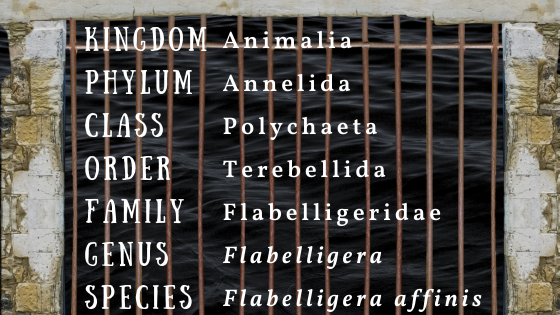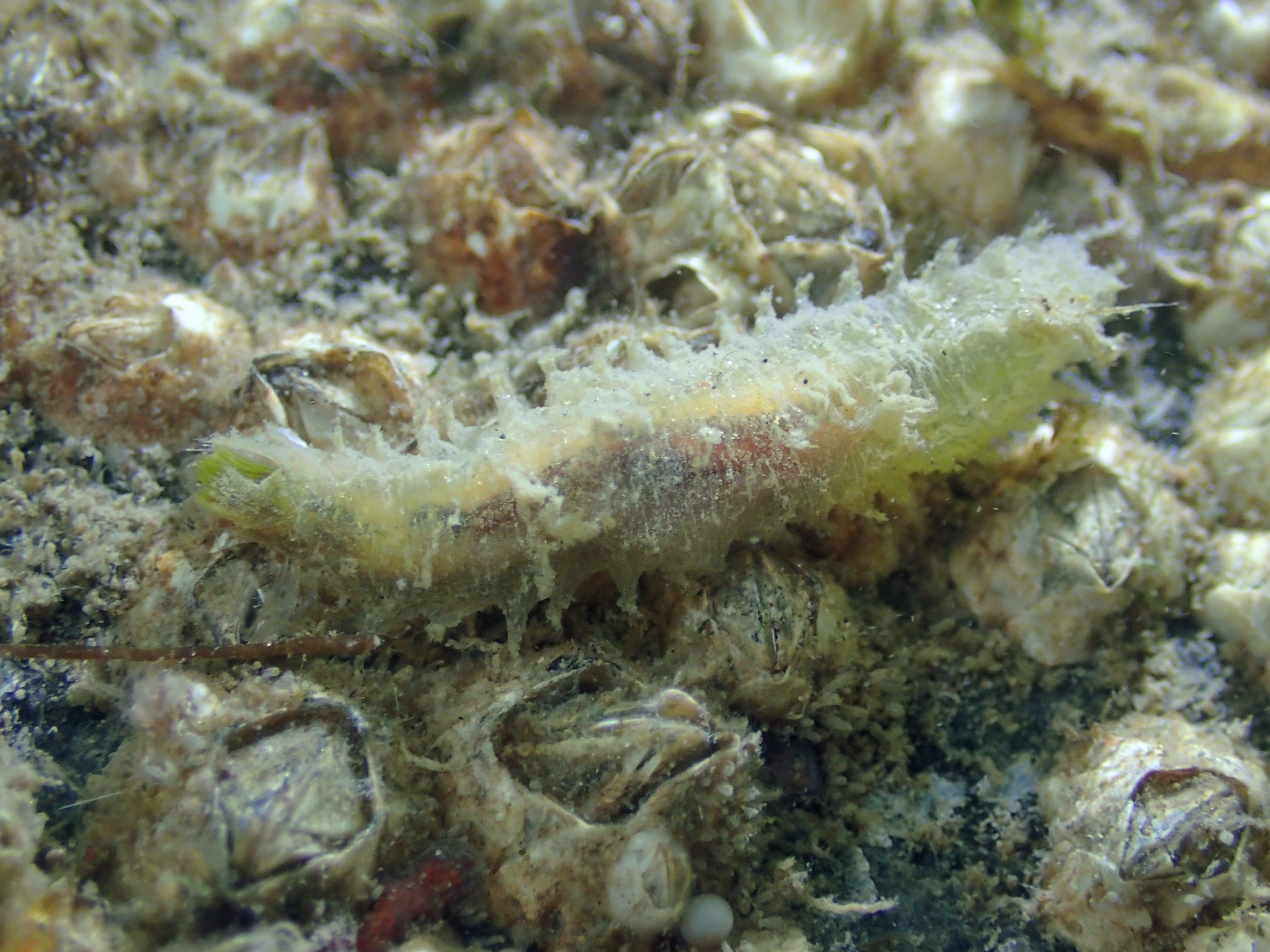
This flabby bristle worm isn’t doing the Monster Mash - it just isn't thrilled with being under my microscope and out of its muddy, rocky habitat.
Here in the benthic lab, Halloween season wouldn’t be complete without a feature of one of Puget Sound’s less-appealing inhabitants. With its “maggot-shaped” body covered in spikes and slime, the flabby bristle worm is not something you would want to cuddle with. But none of its weird quirks are without a purpose, and beneath all that goo lies a hard-working worm that plays an important role in the Puget Sound sediment ecosystem.
Could slime be the next utility fashion trend? Hey, the 90s are back... anything can happen.
Rattle my cage
The flabby bristle worm – I’ll also refer to it by its less-repulsive scientific name, Flabelligera affinis – is a member of a rather bizarre family of marine segmented worms called the bristle cage worms. The “cage” refers to two fans of long whiskery hairs called chaetae that surround the worms’ heads.
Bristle cage worms’ short bodies are covered with bumps called papillae that secrete protective mucus. Some species of flabelligerids make just enough of a coating so that a bit of sand sticks to them for camouflage, but other species really lean into crud couture.
Rise and slime
F. affinis is one such member of the Slime Squad. Its stalked papillae may be microscopic but they are mighty, cranking out a thick mucus sheath that puts the “flab” in flabby bristle worm. The papillae work together with long hairs on each segment to structurally support the translucent sheath and make the worm look a bit like a Jell-o pincushion. Occasionally, bits of debris stick to the sheath as well, giving Swamp Thing vibes.
Left: A flabby bristle worm’s greenish body and red gut are visible though the goo; Center: A preserved worm with some debris stuck to its sheath; Right: Microscopic close-up of a flabby bristle worm’s papillae. Left and right images of F. affinis from the U.K., courtesy of David Fenwick, www.aphotomarine.com
Form follows function
A camo jacket made of slime is a wise wardrobe choice if your soft, vulnerable body is a tasty treat for passing fish. Bristle cage worms can crawl, but they can’t outrun many predators at their caterpillar speeds. Instead, they prefer to keep calm and slime on under rocks or in crevices, which they grip onto with hooked hairs on their hind ends.
Head to toe
Flabby bristle worm on barnacles. Photo by Stefan, iNaturalist, CC-BY-NC
Cage worms’ front ends aren’t encased in the slime cocoon, but they do have their fierce headwear, and their heads are completely retractable into their first few body segments. Double head protection is crucial because these worms have a lot going on in the noggin department.
F. affinis has three pairs of large, pigmented eyes which are more complex than the average marine worm’s small, simple eyes, and have been the focus of scientific research into their structure. Their heads also have branchiae – or gills – that help with respiration. And last but not least, two frilly feeding palps on the head reach out and gather particles of detritus (dead organic matter), algae, and bacteria from the sediment surface. Surface deposit feeders like F. affinis are important because they help “resurrect” the dead by cycling nutrients back into the Puget Sound food web.
Taxonomy terrors
F. affinis has long been thought of as a cosmopolitan species, meaning it occurs in oceans all over the world, including the Pacific, the Atlantic, and even the Arctic, at depths ranging from the intertidal to the deep sea… but true cosmopolitan species are rare.
F. affinis was once believed to be the only species of its genus on the west coast of North America (although it was sometimes referred to by another name, F. infundibularis), but recent genetic studies have shown that two distinct species are present on the west coast, possibly distinguished by depth preference.
What does this all mean? It is likely that F. affinis is actually a complex, or group, of species that share similar characteristics, meaning that the true identity of our strange little friend in Puget Sound could be a mystery. I guess only slime will tell.
Critter of the Month
Bristle cage worms aren’t the only ones who benefit from a little extra head protection!
Dany is a benthic taxonomist, a scientist who identifies and counts the sediment-dwelling organisms in our samples as part of our Marine Sediment Monitoring Program. We track the numbers and types of species we see to detect changes over time and understand the health of Puget Sound.
Dany shares her discoveries by bringing us a benthic Critter of the Month. These posts will give you a peek into the life of Puget Sound’s least-known inhabitants. We’ll share details on identification, habitat, life history, and the role each critter plays in the sediment community. Can't get enough benthos? Check out our Puget Sound Benthos Toolbox story map for photos, taxonomic tools, and more.





